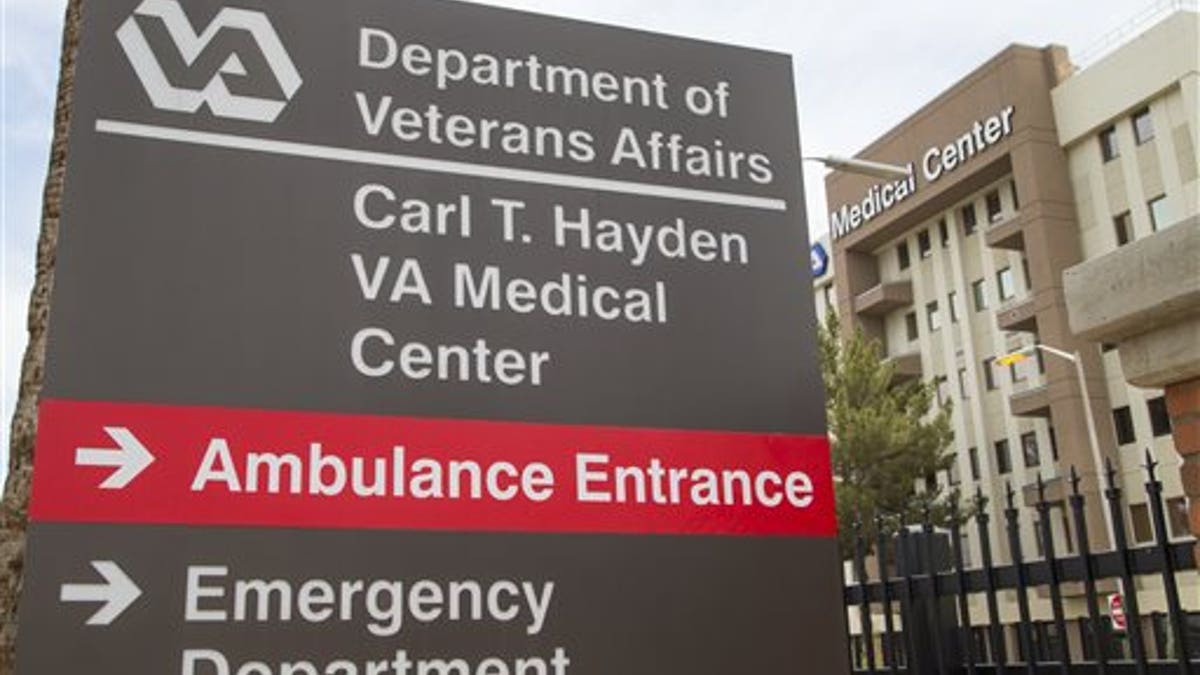
May 28, 2014: The Carl T. Hayden VA Medical Center in Phoenix. (AP)
The Wall Street Journal had a noteworthy piece on the VA scandal yesterday, one that helps turn the story into a life-and-death issue.
Until now, the spotlight has been on veterans who grew sicker or died because of long waiting times that were, in some instances, covered up by government officials. But what about the care they receive in overtaxed hospitals?
The Journal reported: “The Phoenix facility at the heart of the crisis at the Department of Veterans Affairs is among a number of VA hospitals that show significantly higher rates of mortality and dangerous infections than the agency's top-tier hospitals, internal records show.”
I single this out as good example of investigative digging, but also because of the way the story is fading from the media radar, even more quickly than I feared.
Remember all the outrage that echoed across the media landscape in the last two weeks? After a slow start, the VA story reached white-hot intensity, with a broad consensus that this was a genuine scandal. Even liberal columnists and some Democrats criticized the Obama administration, giving the narrative a bipartisan flavor.
Plus, journalists conducted moving interviews with ailing vets and relatives of some who had died, lending the story an emotional punch that lifted it far above most bureaucratic scandals.
But then the Beltway press did what it always does, reducing a complicated story to a game of who’s up and who’s down. The media practically demanded Eric Shinseki’s head, to the point that President Obama had to oust his Cabinet officer simply to change the subject.
Since the resignation last Friday, we’ve seen the Incredible Shrinking VA Story, especially on television. Yes, it pops up now and then, but it’s no longer top-of-the-newscast stuff—as if the problems magically vanished with Shinseki’s departure.
The news cycle moves on, I get it. Everyone’s now obsessed with the strange tale of Bowe Bergdahl, the Taliban prisoner swap and whether he’s a deserter. Apple unveiled a new operating system. Rob Ford is out of rehab and going back to work. More GOP primaries. It’s always something.
But this is serious business. That Journal piece says the rate of potentially lethal infections from central-intravenous lines was 11 times as high among the Phoenix patients as at top VA hospitals. The Atlanta and Houston hospitals were also rated poorly. Did you see any TV networks following up on that?
The Washington Post, at least, reported on the congressional debate:
“Senators are expected to turn attention this week to competing plans to revamp the Department of Veterans Affairs following the resignation of Secretary Eric K. Shinseki.”
It seems Democrats are backing a Bernie Sanders bill that would make it easier for the VA secretary to fire poor performers and allow for the expedited hiring of doctors and nurses, among other things. Republican senators are pushing a bill to allow vets to seek private medical appointments under certain conditions. Their presser, led by John McCain, got a little bit of air time yesterday.
Chronicling what Congress does or doesn’t do is important, although we all know these debates can drag on for months with no end in sight.
But what about keeping the spotlight on the VA abuses? That takes more journalistic boots on the ground. But it would be a disgrace if the media, having largely neglected lousy VA conditions for many years, turned out to have an interest span of only two weeks.
Maybe some news organization is working on a big expose now. But it sure seems like most of the profession has moved on.




